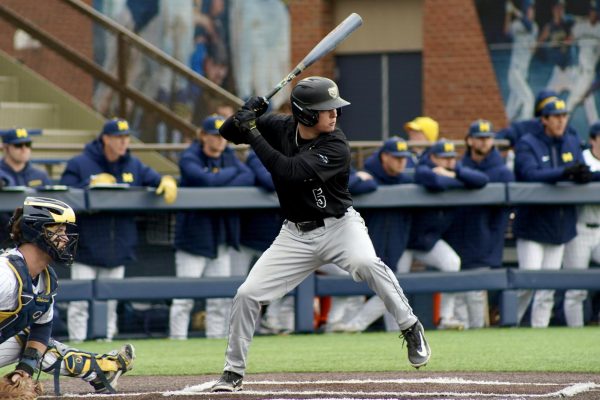March Madness for dummies
Kahlil Felder scored 17 points in the last game against Green Bay. The Golden Grizzlies finished third place in the Horizon League, exceeding the prediction that they’d finish seventh.
The NCAA tournament is arguably the biggest, most popular event in sports, with millions of fans tuning in every year from the time teams are selected until the winner is crowned.
The tournament stretches from mid-March until the first week of April, but the discussion concerning it stretches over the course of the entire season.
Even the biggest college basketball fans can get confused with all the tournament talk, though.
With expert analysis heating up as the regular season closes, it is important for those who put money on the line to pay attention to it to increase their chances of creating a winning bracket.
But what good does tuning in do if the discussion is not fully understood?
Before the madness begins, this cheat sheet should help fans to understand what the commonly used but not so commonly known terms mean to make following along with the talk surrounding March Madness a little less tricky.
Selection Sunday: The day the field of 68 tournament teams is revealed by analysts
Automatic bid: A place in the national tournament secured by the 31 teams who win their respective conference tournament – the only exception is the Ivy League, whose automatic bid is given to the regular season winner.
At-Large bid: A place in the national tournament given by the selection committee to 36 teams that did not win the conference tournament but still have impressive resumes and deserve a spot in the national tournament
Team resume: Compilation of BPI, RPI, notable wins and season record that the selection committee utilizes to determine at-large bids
Notable win: Victory over a ranked team that strengthen a team’s resume
RPI: “Rating percentage index” – evaluates a team based on winning percentage at home, away and neutral sites, schedule strength and opponents’ schedule strength
BPI: “Basketball power index” – evaluates a team based on the final score, pace of play, site, strength of opponents’ schedule and absence of key players
Schedule strength: Measures how challenging a team’s schedule is and is used to determine the significance of a team’s regular season record
On the bubble: At-large teams flirting with the chance of either being in or out of the tournament by proving their worth late with a notable win or being upset
Mid-major teams: Teams that are not among the five major conferences ─ ACC, SEC, Big-12, Big Ten and Pac-12)
Last four in: The last four teams given an at-large bid
First four out: The first four teams that just miss an at-large bid







